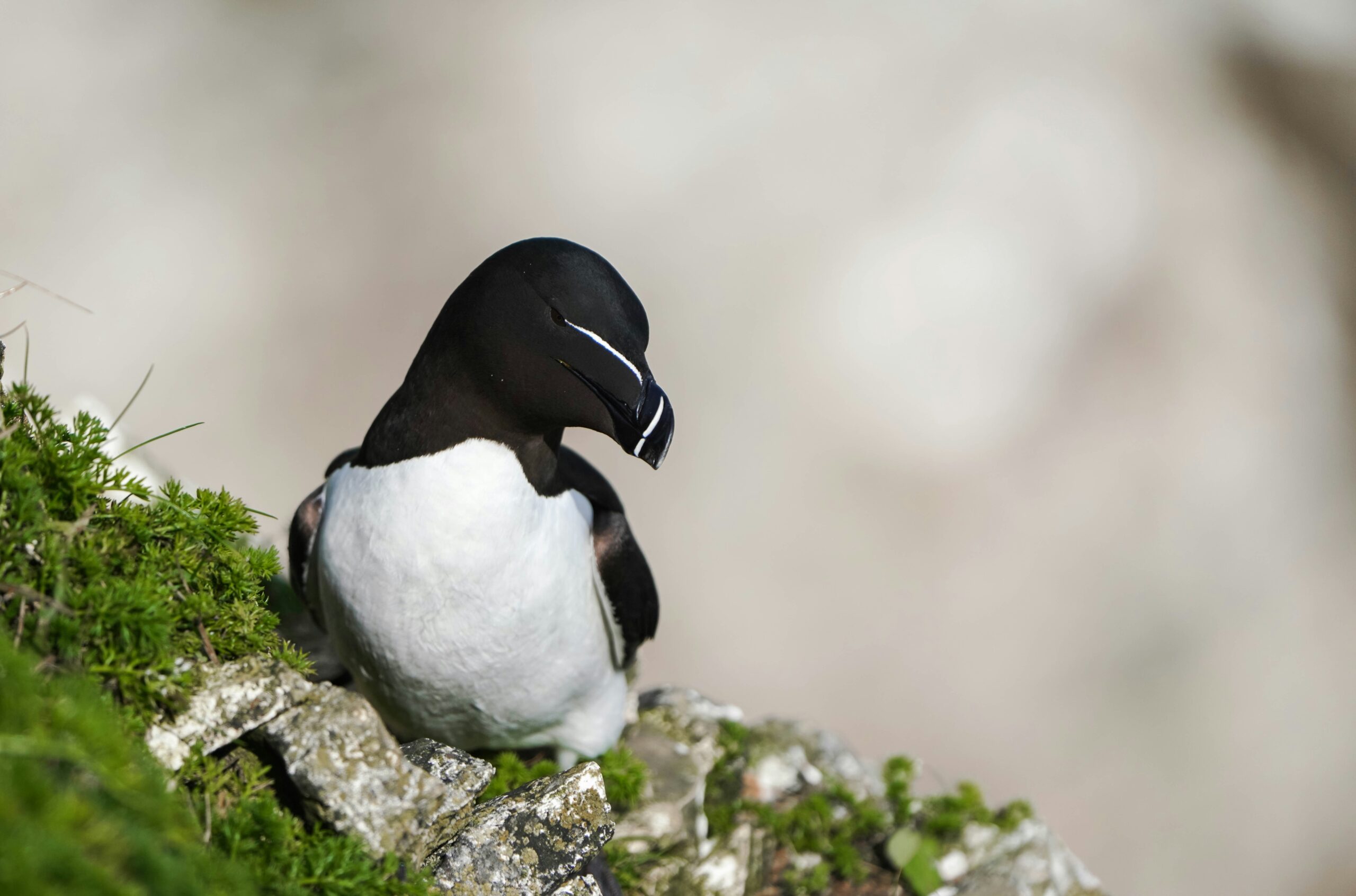Photo by Yomex Owo
The Scottish Government’s new seabird conservation action plan has received a mixed reception from conservationists, with leading wildlife groups welcoming the strategy whilst warning that recent offshore wind farm approvals could undermine its effectiveness.
The Scottish Seabird Conservation Action Plan, launched on 13 August at the Scottish Seabird Centre in North Berwick, sets out over 50 actions to address the crisis facing Scotland’s internationally important seabird populations, with 70% of species in decline over the past 20 years.
RSPB condemns timing following wind farm approval
The Royal Society for the Protection of Birds Scotland delivered a scathing assessment of the plan’s timing, coming just two weeks after the controversial approval of the Berwick Bank offshore wind farm.
Anne McCall, Director of RSPB Scotland, described the conservation plan as “applying a sticking plaster to a gaping wound.” She said: “The seabird conservation action plan was meant to be a moment of hope for Scotland’s iconic and struggling seabirds. But the decision to consent Berwick Bank has changed that.”
The Berwick Bank wind farm, with 4.1 GW of installed capacity and capability to power over six million homes, is predicted by RSPB to lead to the deaths of thousands of seabirds. McCall warned: “Seabirds are already on the brink, Berwick Bank could push them over the edge – quickening some species toward extinction in Scotland.”
Scottish Seabird Centre calls for urgent delivery
Harry Huyton, CEO of the Scottish Seabird Centre, offered cautious support for the plan whilst emphasising the critical need for implementation. Speaking at the launch event, he said: “From the great gannet colonies on St Kilda and Bass Rock, to the puffin burrows that crowd the grassy slopes of Unst and the Isle of May, Scotland is blessed with extraordinary seabird populations. Many are of international importance, yet most seabird species in Scotland are in decline, and urgent, transformative action is needed to save them.”
However, Huyton also expressed concerns about recent government decisions, stating: “While we welcome the Seabird Action Plan, it follows the devastating decision earlier this month to consent Berwick Bank offshore wind farm, which is projected to kill tens of thousands of seabirds. Ultimately, it’s actions that count and, unless this strategy results in a significant change in approach from the Scottish Government, it will be worthless.”
Government outlines comprehensive approach
Cabinet Secretary for Climate Action and Energy Gillian Martin defended the plan as “a vital step forward in protecting some of our most iconic and vulnerable marine species.” She said: “The climate crisis, invasive non-native species, marine litter and access to food are contributing to declining seabird numbers around the world.”
The action plan, developed in partnership with NatureScot, Joint Nature Conservation Committee, RSPB, and British Trust for Ornithology, includes measures to:
- Enhance food availability by improving conditions for prey and minimising bycatch
- Provide safe nesting areas by eradicating non-native invasive predators such as brown rats and American mink
- Undertake key research and monitoring to understand how to build resilience
- Work in partnership with local and international communities to tackle issues on a global scale
Martin emphasised the economic importance of seabirds, noting they “have a significant role in the economy supporting a thriving tourism industry that is vital to local economies, particularly in rural and island communities.”
Scale of the crisis highlighted
The plan addresses mounting pressures on Scotland’s seabird populations, which host around a third of Europe’s breeding seabirds. The combined impact of climate change, overfishing, pollution, habitat loss, and diseases like avian flu are decimating populations, with some beloved species including puffins on the brink of extinction.
Colin Galbraith, Chair of NatureScot, said: “Scotland is a crucial area for internationally important populations of seabirds to breed and forage. The latest research shows many seabird populations are in decline. This new Action Plan will help these vulnerable seabird populations recover and will help the overall wellbeing of the marine environment on which they depend.”
Conservation groups demand proof of commitment
RSPB Scotland’s McCall challenged the government to demonstrate genuine commitment beyond policy documents: “The Scottish Government has said positive words about saving seabirds. But it is actions, not words, that nature needs. It’s hard to see how the Scottish Government can claim to be safeguarding our seabirds when decisions like this are taken without any detail on what urgent measures will be delivered where and when.”
She added: “The Scottish Government needs to prove this seabird action plan is worth the paper it is written on. We need to see immediate, ambitious and urgent action combined with funding if we are to have any hope of saving our internationally important seabirds.”
The tension between renewable energy development and seabird conservation reflects broader challenges facing marine conservation policy as governments balance climate commitments with biodiversity protection. The effectiveness of the Scottish Seabird Conservation Action Plan will ultimately depend on whether its implementation can overcome the concerns raised by leading conservation organisations about recent policy decisions.
